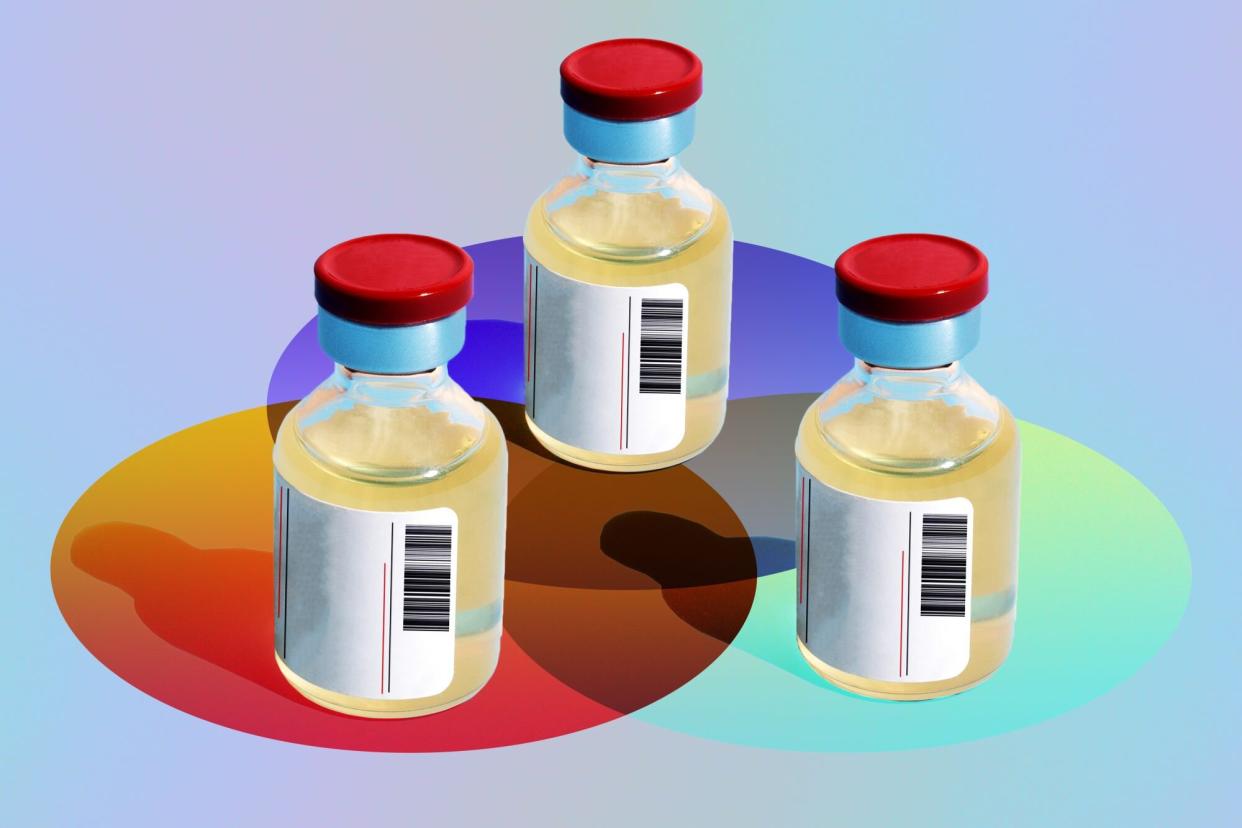Johnson & Johnson Says a Booster of Its COVID-19 Vaccine Offers Stronger Protection

Getty Images
On Tuesday, Johnson & Johnson announced in a press release that an extra dose of its COVID-19 vaccine offers increased protection against the novel coronavirus. New research data shows that receiving a second dose of the J&J vaccine two months after the initial inoculation provides 94 percent protection against a symptomatic COVID-19 infection (which is considered moderate to severe). By comparison, the study found that the one-shot J&J vaccine was 75 percent effective against severe or critical COVID-19 when observed in the real world (vs in clinical trials). (Read more: Everything You Need to Know About Johnson & Johnson's COVID-19 Vaccine)
"Our single-shot vaccine generates strong immune responses and long-lasting immune memory. And, when a booster of the Johnson & Johnson COVID-19 vaccine is given, the strength of protection against COVID-19 further increases," said Mathai Mammen, M.D., Ph.D., global head of Janssen Research & Development for Johnson & Johnson, in the press release.
The new data is based on a real-world evidence study that analyzed 390,000 people who received the Johnson & Johnson vaccine versus 1.52 million unvaccinated folks. The study found that J&J's single-dose vaccine displays "strong and long-lasting protection," and is 81 percent effective at preventing hospitalizations.
Plus, when people received a booster shot two months after their initial dose, researchers found that antibody levels rose to four to six times higher than observed after the single shot. Even more impressive: Antibody levels rose 12 times higher in those who received a Johnson & Johnson booster six months after their initial inoculation, according to the study. (It's important to note that the study — which was conducted from March through late July of this year— has not yet been peer-reviewed.)
Johnson & Johnson also noted in Tuesday's press release that it has made this data available to the U.S. Food and Drug Administration, and plans to submit its information to other health regulators, including the World Health Organization and the National Immunization Technical Advisory Groups. (See: When Will a Johnson & Johnson Booster Shot Be Available?)
Over 14 million Americans have been fully vaccinated with the single-dose Johnson & Johnson vaccine, according to recent data from the Centers for Disease Control and Prevention. The J&J vaccine itself differs from the two-dose Pfizer-BioNTech and Moderna vaccines as it uses an inactivated virus (an adenovirus, which causes the common cold) to deliver instructions to the body to trigger an immune response against COVID-19. The Pfizer and Moderna vaccines instead rely on messenger RNA to carry out similar orders to the body in order to combat the virus. (Related: How Effective Is the COVID-19 Vaccine?)
Tuesday's announcement from Johnson & Johnson comes days after the FDA Advisory Panel recommended that booster doses of the Pfizer-BioNTech vaccines be given to those who are 65 years of age or older or at high risk for COVID-19 six months after they received their second shot, according to The New York Times. The FDA also authorized a COVID-19 booster shot for immunocompromised people in mid-August. As for the general population, "it's unclear that everyone needs to be boosted, other than a subset of the population that clearly would be at high risk for serious disease," said Michael G. Kurilla, M.D., a committee member and official at the National Institute of Health, to NYT.
Regardless of how the availability of booster shots shakes out, it remains imperative to get vaccinated when eligible. Not only can the COVID-19 vaccine protect you against the virus, but loved ones as well.
The information in this story is accurate as of press time. As updates about coronavirus COVID-19 continue to evolve, it's possible that some information and recommendations in this story have changed since initial publication. We encourage you to check in regularly with resources such as the CDC, the WHO, and your local public health department for the most up-to-date data and recommendations.

